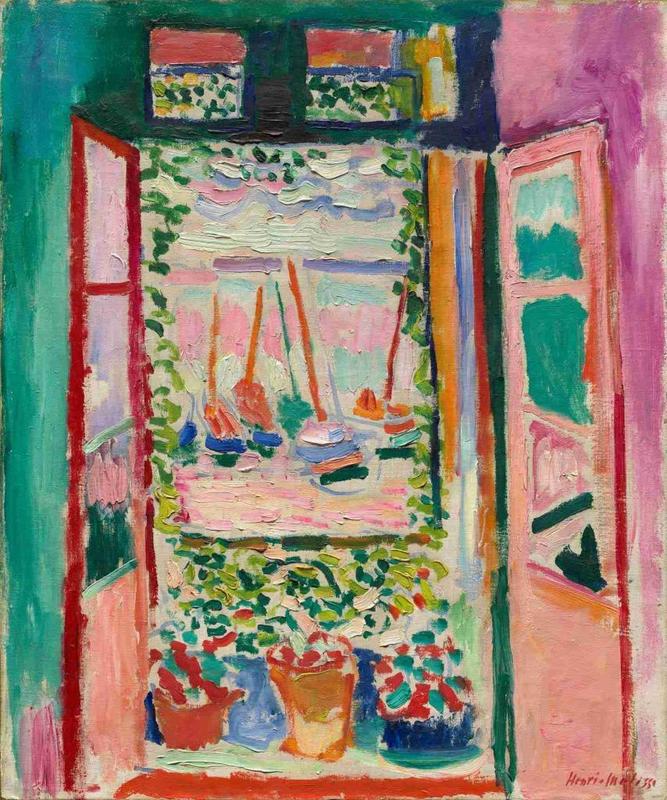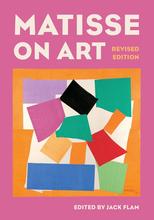More about Open Window, Collioure
- All
- Info
- Shop

Sr. Contributor
Open Window, Collioure is so much more than just a painting of a window, plants, and boats.
No, seriously. Trust me. This painting is particularly meaningful and chock full of that pure, transcendent, French artistry we have come to know and love. This was the first of many of Matisse’s famed “open window” paintings. He loved painting open windows so much that he actually continued to paint this type of scene for the rest of his life after fully developing it in this work. Would you expect anything less from a guy who rubbed elbows with world-famous artists like Cézanne and Gauguin? Probably not. And with good reason.
Henri Matisse was actually almost never a painter. He started out studying to be a lawyer but then enrolled in art school by the age of 22. I can only hope that almost being a lawyer helped Matisse defend himself when the inevitable haters started rolling in. At the 1905 Salon d’Automne, Matisse and his group of friends, who began to paint regular scenes with garish, unnatural colors, debuted their new style. These unsettlingly bright and exceedingly unrealistic colors really wigged people out; they had never seen nature taken to such an extreme.
Like all significant moments in art history, Fauvism was born out of hatred. But haven’t we learned by now that every legendary artist started out by making enemies at the Salon? Just as “Impressionism” was meant as an insult when one art critic was describing Monet’s Impression, Sunrise, “fauve,” or “wild beast,” was meant to insult the group of paintings where this particular Matisse was on display. Louis Vauxcelles, an art critic who reviewed the Salon for the chic magazine Gil Blas, referred to the paintings as a group of wild beasts. Vauxcelles wasn’t just being a bully, though. Other Salon-goers also hated Matisse and his friends. They openly laughed at the works, and some even scratched at the canvases to express their disgust.
The induction of the term Fauve to the art history hall of fame was pretty momentous, but so was what Matisse implied with this painting. After crowning Matisse “chief fauve,” Vauxcelles poised Matisse as a leader of change in the field of modern art. Although artists had been describing paintings as windows to other realities since the time of the Renaissance, Matisse’s first window suggests that a painting contains a wholly separate reality from that which we experience, meaning that the artist no longer has to feel obligated to replicate nature exactly as it appears. Matisse invites the viewer to experience reality as seen through the window of his mind. From here on out, modern artists were now free to be as weird as they wanted to be.
Sources
- Arnason, H.H., and Elizabeth C. Mansfield. History of Modern Art. 7th edition. Upper Saddle River, NJ: Pearson Education, Inc., 2013.
- National Gallery of Art. “Open Window, Collioure.” Collection. https://www.nga.gov/content/ngaweb/Collection/art-object-page.106384.ht…. Accessed September 6, 2017.
- National Gallery of Art, “Open Window, Collioure.” Collection. https://www.nga.gov/content/ngaweb/Collection/highlights/highlight10638…. Accessed September 6, 2017.
- Rewald, Sabine. “Fauvism.” The Heilbrunn Timeline of Art History. The Metropolitan Museum of Art, October 2004. http://www.metmuseum.org/toah/hd/fauv/hd_fauv.htm. Accessed September 6, 2017.
- The Art Story. “Henri Matisse.” Artists. The Art Story. http://www.theartstory.org/artist-matisse-henri.htm. Accessed September 10, 2017.
Featured Content
Here is what Wikipedia says about The Open Window (Matisse)
The Open Window, also known as Open Window, Collioure, is a painting by Henri Matisse. The work, an oil on canvas, was painted in 1905 and exhibited at the Salon d'Automne in Paris the same year. It was bequeathed in 1998 by the estate of Mrs. John Hay Whitney to the National Gallery of Art, Washington, DC.
It is an example of the Fauvist style of painting that Matisse became famous for, and for which he was a leader, roughly between the years 1900–1909. The Open Window depicts the view out the window of his apartment in Collioure, on the Southern coast of France. We see sailboats on the water, as viewed from Matisse's hotel window overlooking the harbour. He returned frequently to the theme of the open window in Paris and especially during the years in Nice and Etretat, and in his final years, particularly during the late 1940s.
Henri Matisse loved painting open windows and painted them throughout his career.
Check out the full Wikipedia article about The Open Window (Matisse)













